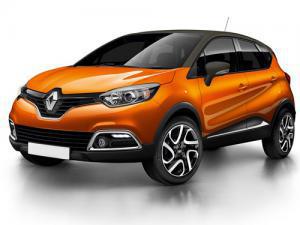What does the Govt’s plan to ban petrol and diesel cars by two thousand forty mean?
A squeeze on polluting cars and a ban from 2040: TG explains
Read more on:
The Government’s fresh policy to cut air pollution has two striking headline measures. A squeeze, very soon, on the most polluting vehicles – which includes older diesel cars. And the expectation of a ban on the sale of all fresh petrol and diesel cars from 2040.
They’re linked, but it makes sense to consider them separately.
The diesel part of the policy is designed to cut noxious pollution in cities – from sooty particulates, and from oxides of nitrogen (NOx). These have been a terrible problem, bruising the health of hundreds of thousands of people who have asthma and heart problems. It’s reckoned to cause as many of 40,000 of them to die early. NOx is also poisonous to children, slowing their growth.
Vehicles are very much to blame for this. If you look at a concentration map of NOx in London, it bears very close resemblance to a road map. In many areas of many cities, those concentrations are above the legal maximum.
To be fair the level of that pollution has been falling, but not swift enough. Also, not as swift as you’d expect from the way Euro four then Euro five then Euro six are supposed to have cleaned-up their exhausts. Anyone with a passing skill of latest real-world emissions news (and not just the VW scandal) will understand why.
But the Government has for a long time shoved us into diesel cars because they are generally more economical than petrols so they produce less CO2 and hence cause less climate switch. Today’s strategy says that NOx and particulate pollution is a local issue. So the Government is pushing responsibility for cleaning up local emissions onto local councils and city mayors.
Could it be that the Government doesn’t want to make itself unpopular with millions of diesel drivers? We couldn’t possibly comment.
Anyway, what this means is a confusing patchwork of measures across the country.
London has already got its measures in place. From twenty three October this year drivers of Euro four cars and older will have to pay £10 a day to come in the existing Congestion Charge zone. That’s in addition to the £11.50 congestion charge. In 2020, any pre-Euro six diesel car will be charged in the same zone. By then those cars will be five years old.
Other cities will go after, but most likely charge diesels only for certain congested routes. We don’t know.
So what if you’re thinking of buying a diesel car? What if you own one – will it soon be worthless? Will you be permitted to drive it where you want?
Answers are pretty hard to come by. So far there are no current or planned limitations on fresh (Euro 6) diesels. But after today’s announcement, local regulations will switch rapid. You’ll just have to keep a close eye on your own local authority and the ones for the cities you drive into. That includes many cities across mainland Europe, too. If you live in the countryside or drive mostly out of cities, diesel is safe for now.
The Government is providing £255 million to help councils enact whatever measures they think will improve air quality most effectively. That might pay for a road charging scheme, might retro-fit buses with harass treatment, might build cycle lanes, might help encourage car sharing or install EV charging infrastructure.
It might even pay for local scrappage schemes, but this now seems very unlikely.
The 2nd major part of today’s news is that all fresh diesel and petrol cars might be banned from sale from 2040. This wouldn’t only eliminate toxic tailpipe emissions altogether, it will also cut CO2. So it chimes with two environmental necessities.
(Of course we’d need more clean energy generation, but not very much more. It’s likely by then that EVs will be part of a grid smoothing system. The car batteries will charge up when there’s excess wind-generation at night, and discharge into the grid at times of the day when homes and industry are using electric current for other things.)
Talking about EVs in the dry language of energy policy is one thing. But what does it mean for the cars we love? Well, two thousand forty is twenty three years away. We have little idea what sort of low-emission propulsion will be available by then. It might well be so agreeable we’ll have voluntarily given up combustion.
Recall, just ten years ago the only electrified car on sale in Britain was the G-Wizz. Five years later the Tesla Model S went into production. By two thousand twenty there will be a widespread fast-charging network along Europe’s motorways. It’s likely that by two thousand twenty five or so, for almost everyone, an electrical car will be as practical and as cheap to own as a petrol or diesel. As well as smoother, quieter and livelier. It’s also possible that more hydrogen stations will make fuel-cells more practical.
In other words, combustion-engined cars very likely won’t need outlawing by 2040, because no-one will want them.
No-one, maybe, except us petrolheads. But recall how we used to think all hybrids would be like the Prius, until we got the Porsche 918. We used to think all EVs would be like the Leaf, until we got Tesla’s Ludicrous mode. We’re pretty poor at predicting the delights that car engineers will build for us next year, never mind in twenty three years’ time.
Share this page:
What do you think?
This service is provided by Disqus and is subject to their privacy policy and terms of use. Please read Top Gear’s code of conduct (link below) before posting.
